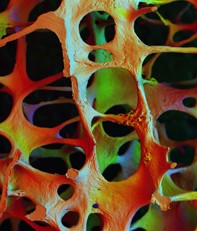Peer Reviewed
Perspectives
Why use parenteral therapies for osteoporosis?
Abstract
Treatment options for osteoporosis have dramatically changed over the past 15 years. The newer parenteral therapies, zoledronic acid, denosumab and teriparatide, are all effective treatment options with differing mechanisms of action. Here we review these new agents and compare their relative merits with existing oral medications for osteoporosis.
Key Points
- Treatment of osteoporosis reduces mortality, as well as preventing further fractures, yet fewer than 20% of people in Australia with a previous osteoporotic fracture are actually treated for osteoporosis.
- Treatment options for osteoporosis now include bone-building (anabolic) and antiresorptive drugs, a choice of oral or parenteral administration, and varying dosing regimens from daily through to yearly administration.
- Longer dosing intervals for zoledronic acid and denosumab largely eliminate the issue of self-determined adherence and persistence.
- A parenteral route of administration for treatment of osteoporosis does not automatically confer better efficacy.
Purchase the PDF version of this article
Already a subscriber? Login here.

